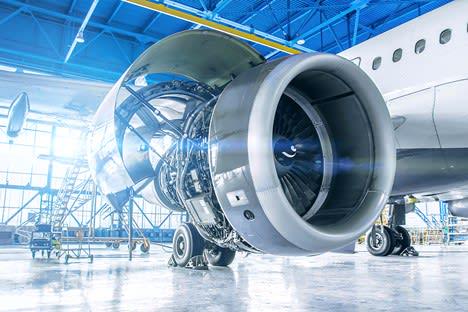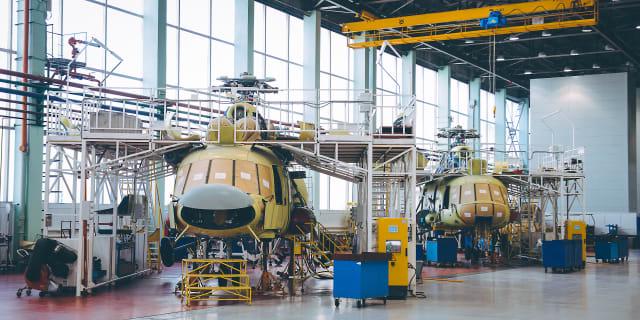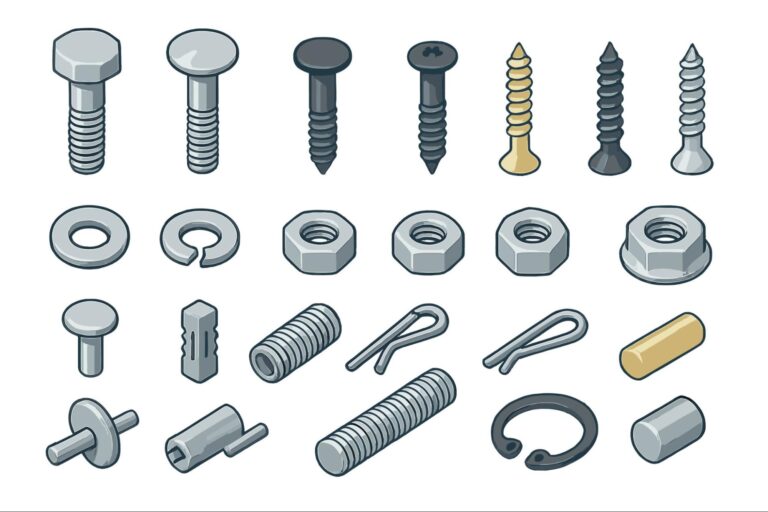Time to read: 6 min
Want to learn more about machining challenges when working with aerospace components? Register for this live webinar.

The world of aerospace involves a degree of perfectionism that is not inherent to most industries. Safety is a critical factor when it comes to aviation design, and components must be manufactured in accordance with the highest standards of accuracy and precision. Unlike a bracket that may be designed for a consumer good (e.g., a washing machine), the exact same bracket could have the potential for devastating consequences if it were to malfunction within an aerospace application. Planes need to last for decades—with constant exposure to the elements, including heat, rain, snow and lightning—and must hold up during pressurized cycles mid-air.
Weight ratios are another consideration paramount to all things aerospace. When different components are put together, the weight of the assembly must be mitigated so that the aircraft is as light as possible. This often leads to designers converting multiple assemblies into a single component with complex geometries.
Materials must adhere to a specific set of mechanical properties, and are selected meticulously based on the aircraft design. For example, titanium is used in engines because of its high strength and heat resistance. For the skin, new planes are starting to transition towards composite materials based on their light weight. Weaker components and pockets may be made of aluminum—which is also light—while structural components typically use alloy steel.
Engineering.com met virtually with Samson Olanrewaju, Technical Application Engineer at Fictiv, to discuss the challenges associated with designing parts for the aerospace industry.
In his previous role as an aircraft design engineer at Vertical Aviation Technologies, Olanrewaju created 3D models for components ranging from subassemblies to general assemblies, all the while ensuring their manufacturability. During his time with this original equipment manufacturer (OEM), Olanrewaju also performed stress and structural analysis to ensure that parts could withstand design loads and meet stringent tolerance requirements.
One of the factors he emphasized was stressing the skin of the aircraft for an extremely smooth surface finish. “Aerodynamics, for me, is a fascinating and beautiful aspect of aviation,” shared Olanrewaju. “Everything that flies depends on the airflow across surfaces. A typical airplane must provide a thrust to get the aircraft off the ground. The surfaces have to be smooth enough to allow this airflow to create the amount of force needed.”
“If you have little dents or an undulating surface, the pressure across that surface is redistributed,” Olanrewaju continued. “For example, in the case of an aircraft wing, the airflow across the top and the bottom surface is what would determine the upward pressure in lifting off the aircraft. If we have a surface that is not smooth enough, our calculations were way off because that air pressure now begins to form a vortex. A pocket of air is created that could induce drag—and defeats the very purpose of trying to fly, which is creating a lift force.”
Since it can be almost impossible to eliminate the vortex completely, vortex generators can serve to energize the airflow over ailerons. The aircraft design process involves first assessing the amount of power needed to generate a certain lift force. Prototypes of air frames are created and evaluated against predetermined weight and lift force requirements. Changes to the design are subsequently considered in order to satisfy the initial design criteria. This could include the addition of winglets to reduce the vortex at the tip of the aircraft.
Unlike the automotive world, aerospace embraces elasticity—things have to be able to flex rather than break. While this ensures safety, the flexibility can lead to resonance issues. These can be addressed by tuning masses slightly, though always in line with the center of gravity.
“The center of lift starts from the aircraft at the mid-section and goes after that, and the distance depends on the weight and general configuration of the aircraft,” said Olanrewaju. “The limitation is that we can only move masses around as long as our center of gravity falls within that range once the plane is fully loaded for takeoff. Let’s say, if we have fuel tanks on the wing, we can slightly adjust closer or further away depending on the design. The typical twin-engine configuration would have a smaller rule of manipulation from the center of gravity than other configurations of aircraft that have three engines—two on the wings and one in the vertical stabilizer.”

When it comes to manufacturing techniques, traditional manufacturing processes (such as forging, casting, CNC machining, sheet metal fabrication, etc.) are still preferred due to the resulting high strength and structure of parts. While 3D printing is promising, Olanrewaju believes that the technology will need to continue its progression before the aerospace industry can fully transition towards additive manufacturing.
“It would have to come to a point where the relative comparison of material strength obtained from forming and subtractive manufacturing versus from 3D printing (additive manufacturing) is very close,” asserted Olanrewaju.
Sourcing manufacturing processes such as complex CNC machining and specialized forging can be difficult due to component complexities and strict regulations, which often leads to production constraints. Larger companies tend to manufacture core designs in-house to circumvent issues related to finding the right manufacturer. Excess loads are handed off to trusted third-party companies who have already earned the aerospace industry’s trust. Smaller companies are frequently faced with the challenges of regulatory compliance, which can demand lot traceability details almost back to the mine.
“That’s why, when smaller companies try to manufacture an aircraft, they are usually not bringing completely new technology into the design,” said Olanrewaju. “They’re just making a modification to an existing prototype. For example, aircraft industries right now are trying to go solar. They are not changing the overall configuration of the aircraft; they are just adding features so it is more appealing to the environment.”
One solution is to partner up with other small companies. These may not necessarily be manufacturing partners, but co-partners in the aircraft industry for the manufacture of specific components. Another alternative is to outsource the work overseas—although this can be complicated due to International Traffic in Arms Regulations (ITAR). Airbus is one example of a company that manufactures different sections of its aircraft through its network of partners in approximately four countries, assembling the parts at the end.
“One thing you have to be careful about is the risk of the components not matching when they come together to be assembled,” cautioned Olanrewaju. “That’s where high precision and tolerances come into play.”
For small- to medium-sized firms that don’t have the luxury of researching thousands of potential vendors, an intermediary such as Fictiv can provide access to a wide range of capabilities through on-demand manufacturing.
“It would save so much time and cost for the aerospace industry to go through vendors with accredited manufacturing partners, while making processes more efficient,” said Olanrewaju.
This would also level the playing field for “garage” engineers to compete with larger, more sophisticated companies. “Boeing already has a massive number of manufacturers and partners at their fingertips,” conveyed Olanrewaju. “Three engineers in a garage wouldn’t have that connection. Assigning aspects of their design to an intermediary company would bring them a little bit closer to delivering on time as compared to Boeing. The first person to hit the market probably wins.”
As for the design versus manufacturing hierarchy, Olanrewaju is finding design and manufacturing departments are increasingly working hand in hand. Designers are becoming open to manufacturability considerations, and are more willing to modify original designs as long as their initial criteria and specifications are met.
“At the pace the aerospace industry is moving right now, we don’t really have the time to design, go through manufacture, and come back,” declared Olanrewaju.
In the automotive world, vast numbers of prototypes are manufactured as pilot units that can be tested and broken hundreds of times. Based on the immense cost of planes, a similar process cannot be economically implemented for aerospace—making it all the more crucial to get things right the first time.
“If we’re starting with a brand-new design, we’ll send its prototype for testing,” said Olanrewaju. “If it’s a sustainable engineering design that already exists, we can go ahead and order as much of the part as we want.”
Every single component of a new aircraft design must be approved by the Federal Aviation Administration (FAA). Even if technology makes sense from an engineering perspective, it must have a proven track record through comprehensive testing using different stress loads, maneuverability, and more. Only then can the aircraft hit the market.
There is a trend of companies looking to electrify low-speed aviation and accommodate lighter weight batteries. Olanrewaju foresees the adoption of advanced battery technologies down the road as they continue to rapidly evolve. However, he doesn’t believe that going green will change the general configuration or manufacturing processes for aircraft drastically.
“The form might slightly change because we’d have to redesign our calculations for balance weight,” suggested Olanrewaju. “But the overall function should stay the same.”
To learn about aerospace cnc machining challenges when working with aerospace components, register for this live webinar.
This article was originally posted on engineering.com.










